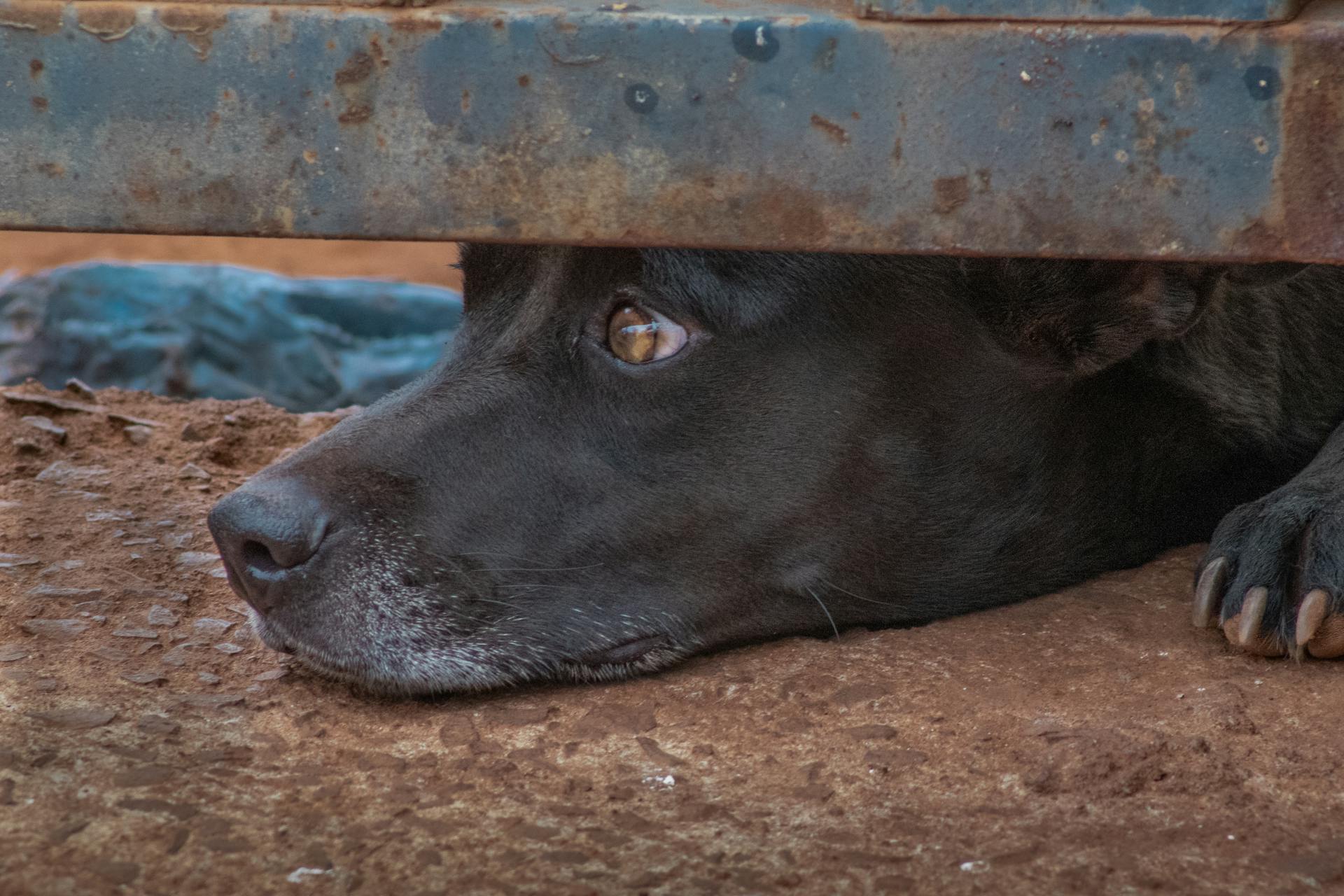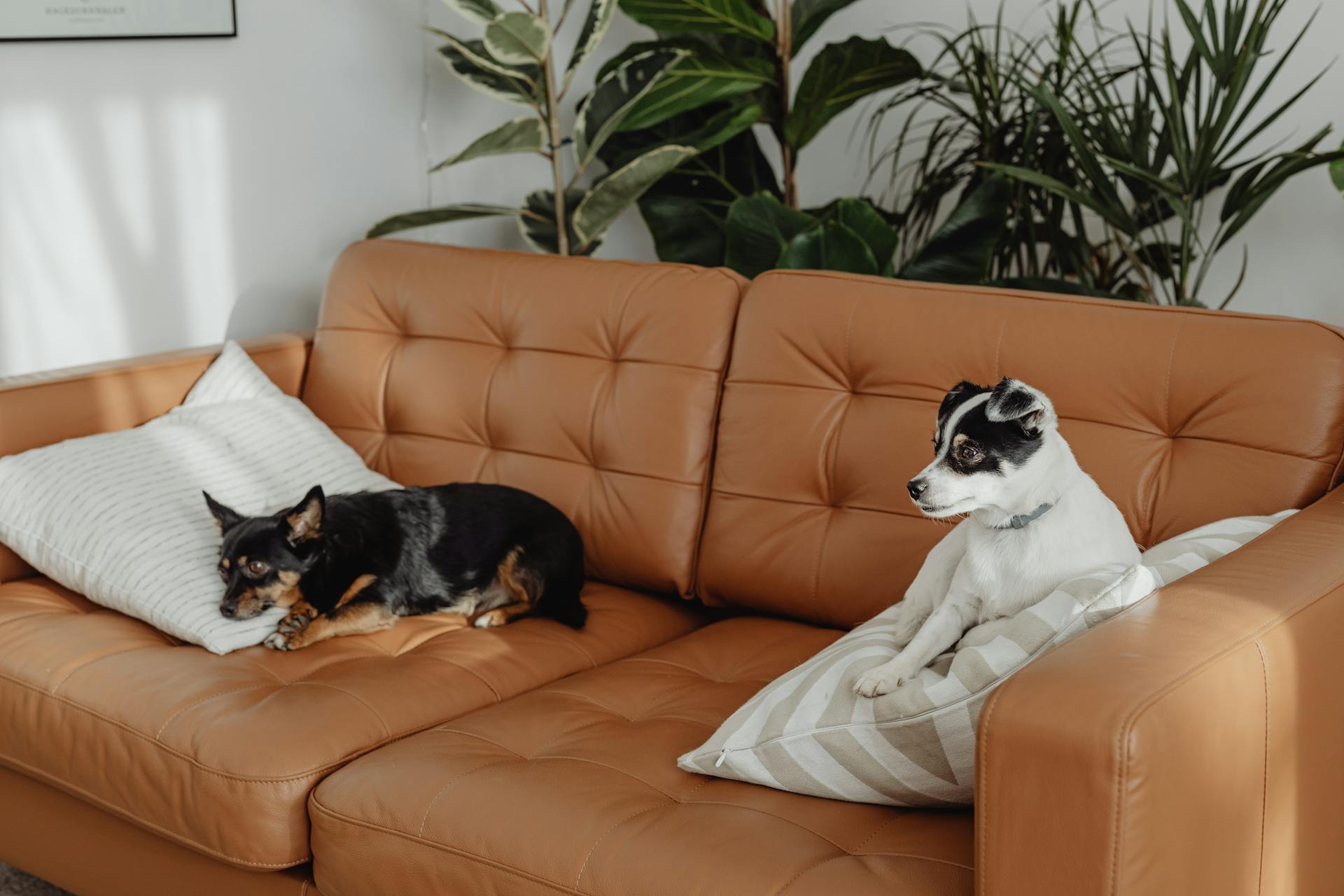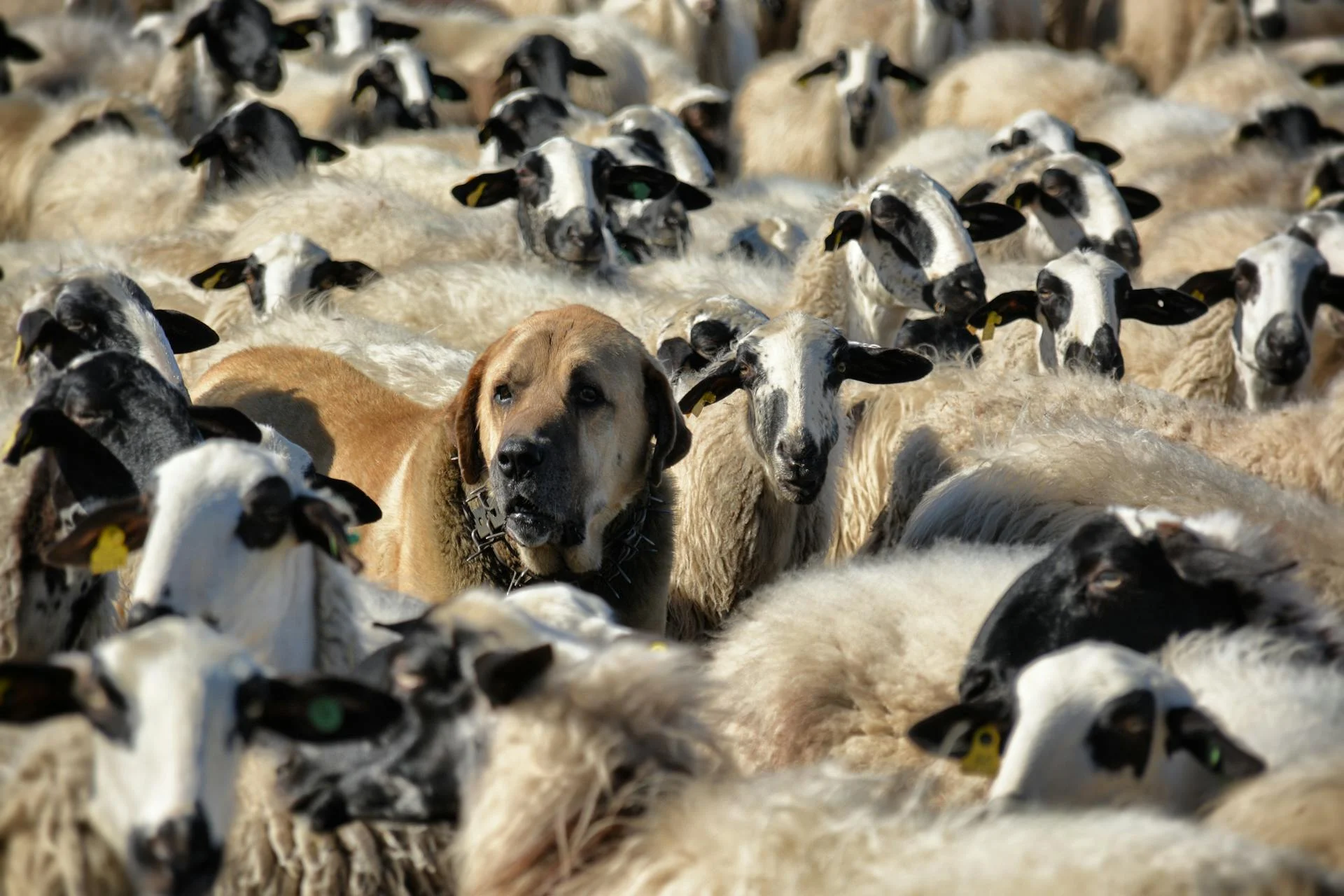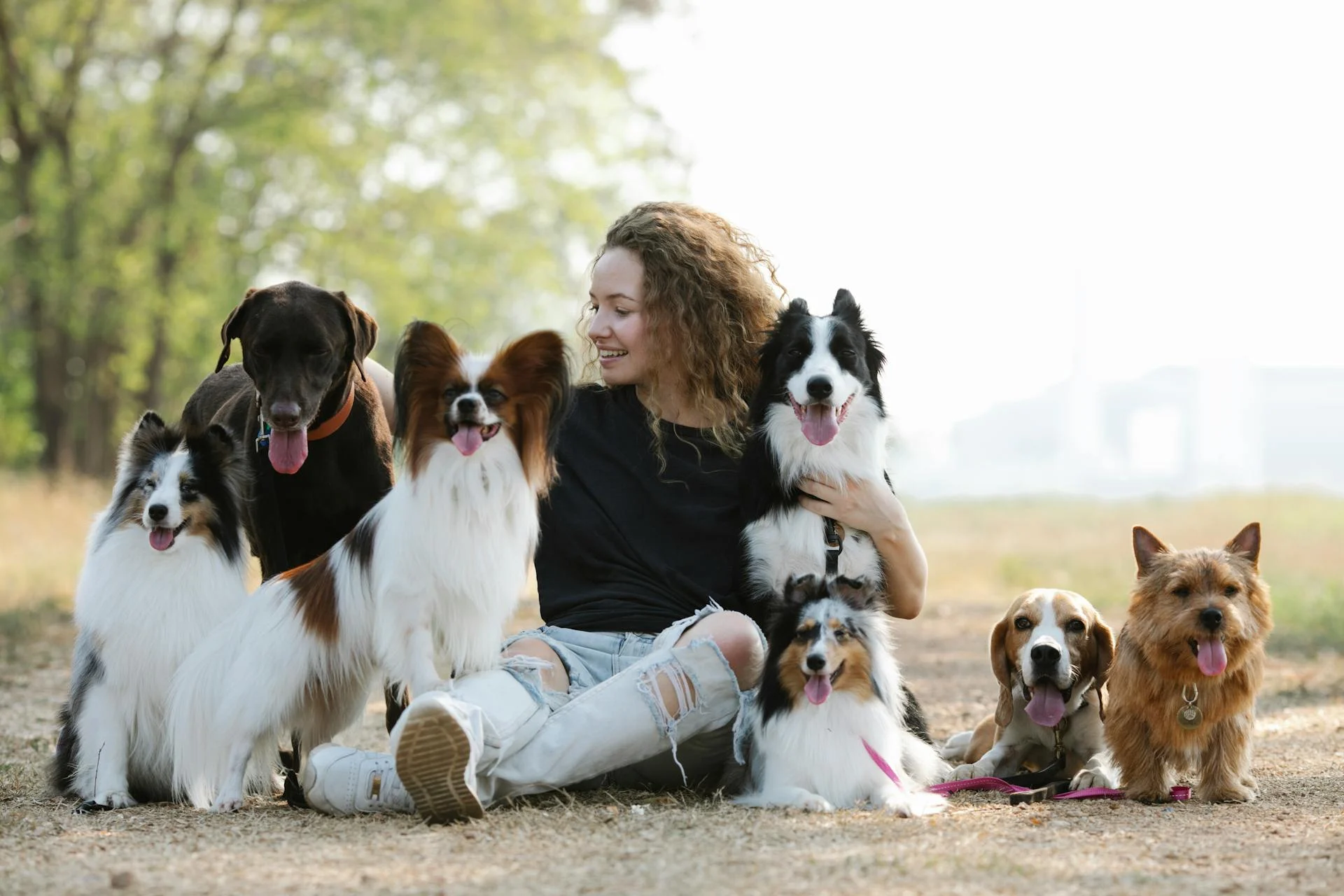
Labrador dogs are a beloved breed, and understanding their behavior is crucial for any owner.
Puppies typically start teething between three to four months old, during which they may exhibit chewing behavior to alleviate discomfort.
Between four to six months old, Labrador puppies go through a critical socialization period, where they learn to interact with their human family and environment.
In this stage, they are highly receptive to new experiences and should be exposed to various sights, sounds, and smells to help them develop into confident adult dogs.
As they mature, Labradors typically reach physical maturity between 12 to 18 months old, but their emotional and social maturity may take longer to develop.
Understanding Labrador Behavior
Labradors are a sporting breed, made for life outside traveling great distances, running, jumping and swimming through tough terrain, working with and retrieving for their owners.
Their lives will have been filled with regular, mentally stimulating training and long hard days of doing meaningful work. This is why many Labradors are bored, with unfulfilled lives, which is one of the major causes of bad behavior.
Many unwanted behaviors from our point of view are perfectly natural and normal behaviors for a Lab, such as barking when people approach, eating poop, digging in soil, growling when feeling threatened, chasing small animals, and peeing to mark their territory.
Here are some possible causes of Labrador behavior problems:
- Poor health, pain or illness
- Fear or being scared of something or someone in their environment
- Inadequate socialization when they were a puppy
- Feeling socially isolated
- Lack of exercise
- Lack of mental stimulation
- Genetic, hereditary issues
- Sudden changes in diet
- Sudden changes in daily routine
- Being inconsistent with the rules you place on them
- Lack of comfort (quiet time, a nice place to rest)
- Inconsistent or lack of sleep
By understanding these causes, we can take steps to provide our Labradors with the outlets and stimulation they need to thrive.
Clinginess
Labradors are naturally inclined to be close to their owners, and you might find yourself with a 'velcro puppy' on your hands. They're instinctively aware of their own vulnerability and know it's in their best interests to stay close to you.
This clinginess is partly due to their breeding history, where dogs that were naturally motivated to remain close to their owners made better workers.
As a result, your Labrador will likely want to be near you at all times, whether it's sleeping, eating, or just hanging out.
Playfulness
Labrador puppies spend more time playing than at any other time in their lives. This is completely normal and a vital part of their development.
Barking, growling, lunging, pouncing, and biting are all completely normal elements of puppy play. These behaviors would be valuable practice for hunting in the wild, and they're still present even in domesticated Labradors.
In the wild, these behaviors would be essential for survival, and they're still an ingrained part of a Labrador's natural instinct. This means that even as a domesticated pet, your Labrador will still exhibit these behaviors, especially during play.
Impulsiveness
Labradors are a chaotic presence, and it's up to us to manage their environment so that their impulsiveness doesn't become a problem.
Their very little impulse control means they rarely sit still for long, and they can't resist temptation. This is why it's essential to keep tempting items like shoes out of reach.
Make sure to provide your Labrador with plenty of suitable toys to keep them occupied and satisfied.
Know Yourself
Each Labrador is unique, with their own personality traits that may differ from their littermates.
Understanding what triggers your dog's aggression is key to making them calmer. For instance, if your Labrador becomes aggressive when frustrated with rough play, avoiding rough play can help resolve the issue.
Labradors may be upset by certain sounds, like a squeaky toy, which can cause them to bark and snarl.
It's crucial to recognize and address these triggers to help your dog feel more comfortable and calm.
Training and Prevention
Curing jumping up in Labradors requires patience and persistence. It's not too difficult, but it does take some effort.
Avoid chasing your dog while they're carrying something, as this will only encourage them to run faster. Instead, swap the item for a tasty treat, like chunks of roast beef, and gradually phase out the rewards as your dog learns to bring you their "treasure" voluntarily.
If you have a Labrador that's prone to whining, it's likely because they've learned to associate whining with getting attention. To put it right, you can try a straightforward training program to teach your dog to be quiet in their crate.
Overcoming Whining Habits
Dogs often learn to whine when they are crated or left, and we can inadvertently teach them to do this by rewarding the whining.
The key to stopping whining is to teach your dog to be quiet in his crate, and you can find a straightforward training programme to help you do this.
By following the instructions to teach your dog to be quiet in his crate, you can break the cycle of rewarding whining and help your dog learn more acceptable behaviors.
Labradors, in particular, are prone to whining, so it's essential to address this issue early on to prevent it from becoming a habit.
You can find more information about noisy Labradors and how to address their whining in the article "Noisy Labradors- getting to the root of the problem".
If you're struggling to stop your dog's whining, don't worry – with patience and dedication, you can teach your dog to be quiet in his crate and enjoy a more peaceful life together.
How to Prevent My Pet from Jumping
Curing jumping up in dogs requires patience and persistence. It's not too difficult, but it does take time and effort.
Jumping up is quite cute in puppies, and many of us allow them to do this until they start knocking people over.
Allowing your dog to jump up can lead to unwanted behavior, so it's essential to address it early on.
How to Prevent Stuff
Labradors are natural retrievers, which means they love to carry things around in their mouths. This can be a problem if they start picking up your stuff, as it gets them a lot of attention.
Chasing your dog while they're carrying something will only encourage them to run faster, so it's best to swap for a tasty treat instead.
Using amazing treats like chunks of roast beef can help your dog learn to bring you their "treasure" rather than running away with it. Keep a little pot of yummy leftovers in the fridge for this purpose.

Putting your stuff away can help prevent your dog from picking it up in the first place, but it's not always possible to nail down everything in the house. Giving your dog soft cuddly toys of his own can also help reduce the likelihood of him picking up your cushions, for example.
Labradors can be particularly destructive towards the end of their first year, long after they're firmly in possession of a full set of adult teeth, so be prepared for this stage if you haven't already.
Help Raid the Trash Can!
Labradors are notorious for raiding the trash can, and it's a challenge many owners face.
Bin raiding is a universal problem for Labrador owners, and it's rare to find a Labrador that doesn't consider the kitchen bin a source of edible delicacies.
The best solution for bin raiding is to place the can where the dog cannot get at it, or purchase a Labrador-proof bin.
My Is Naughty
My dog is so naughty! Many people write in to ask how they can get their dog to listen to their commands. With a structured training programme, you can achieve this.
Behind every well-behaved Labrador, lie many hours of training. Getting your dog trained may seem like an effort at times, but training brings huge rewards. A trained dog responds to your commands or signals without hesitation.
Some behavior problems are normal canine behaviors, like digging, barking, or chasing small animals. These behaviors can be unacceptable or unwanted by an owner, but training alternative and acceptable behaviors can solve the issue.
True behavior problems, like excessive fear, anxiety, or aggression, require specific advice from a qualified and knowledgeable professional. These problems can rarely be tackled by a novice alone, as the wrong approach can make things worse.
If your Labrador is exhibiting naughty behavior, it's essential to identify the cause and motivation behind it. This will help you choose and train an alternative behavior. Remember, every dog is unique, and their environments are different.
A structured training programme and patience are key to solving behavior problems. Don't get complacent, as behavior can change with age, just like in humans. Enjoy the good times, like when your Labrador is like an 8-year-old child, but be prepared for puberty and new challenges.
Establish Dominance
Establishing dominance is crucial in training a Labrador. You need to teach your Lab that you're the leader, especially when they're still a puppy.
Ideally, this should be done while they're still young, so they learn to respect your authority and obey you. If you don't do this, your puppy may take control.
It's not too late to establish dominance with an older Labrador, but you need to be firmer with them to show them who's boss. However, never hurt them to achieve this - it's not necessary and may make them more aggressive.
Giving them a firm "No" and rewarding good behavior will help them learn the difference between good and bad while still loving and respecting you.
Developmental Stages
Labrador dogs develop at a rapid pace, with their behavior changing significantly as they mature. They pack a lot into a short lifetime, averaging just 12 or 13 years.
Their first 6 months of life are equivalent to the first 10 years of a human child's life, a period of rapid growth and development.
Between 6 and 12 months old, Labradors enter adolescence, a time of significant change and growth.
At 1 year old, they are a mature adolescent, and by 2-3 years old, they are physically and mentally mature.
Here's a breakdown of their developmental stages:
Age
As your Labrador grows, you'll notice significant changes in their behavior, and understanding these developmental stages is crucial for a harmonious relationship.
Infant Labradors are champion nappers, and they'll spend a lot of time sleeping, usually up to 18-20 hours a day.
Their attachment to their primary carer is strong, and they can become quite clingy, often wanting to be close by at all times.
In the first six months, Labradors are playful and impulsive, which can lead to some energetic and chaotic moments.
As they enter adolescence, Labradors become more bold, confident, and independent, no longer relying on their adult caregivers for protection.
Unneutered male dogs tend to carry out more scent marking during this stage, while unspayed female dogs will start going into heat every 6 months or so.
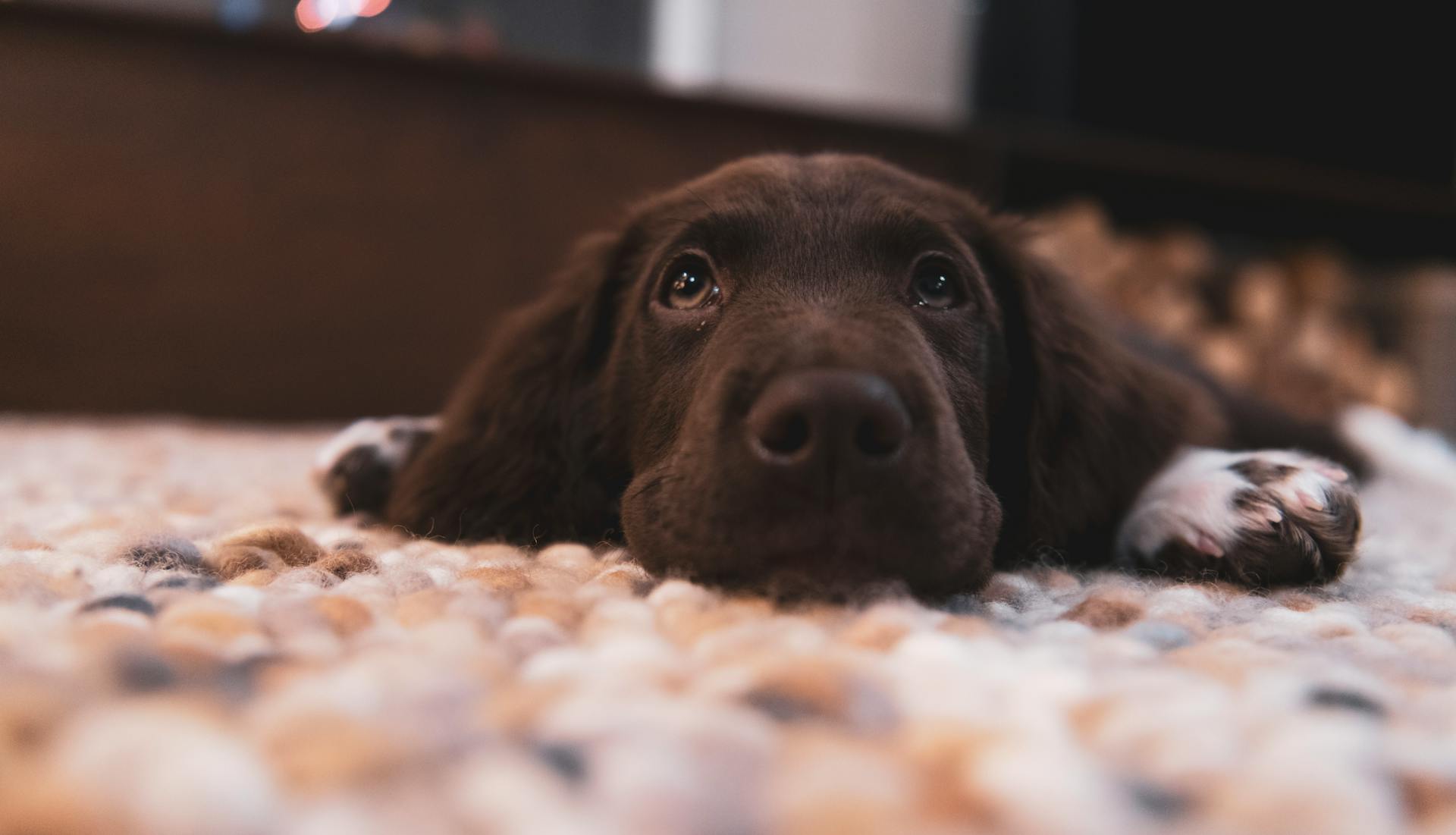
You might notice your dog suddenly crossing soccer fields to say hello to another dog, and when you try to call them back, they've gone deaf to the recall cue that used to work.
During this stage, it's essential to protect your cues by not using them when your dog is likely to ignore you, and manage their opportunities to make unwanted decisions instead.
Using a long line or exercising them in a secure field can help you manage their behavior during this period of growing independence.
Sleep Patterns
Sleep patterns are crucial for young Labradors, who need a lot of sleep to support their rapid growth and learning.
They tend to nap frequently during the day to make up for nighttime wake-ups, which can be challenging for their owners.
Most puppies are sleeping through the night by 14 weeks old, but they may still wake up early in the morning to pee.
After 14 weeks, they'll gradually start waking up earlier in the morning, so be prepared for an earlier wake-up call.
Adulthood
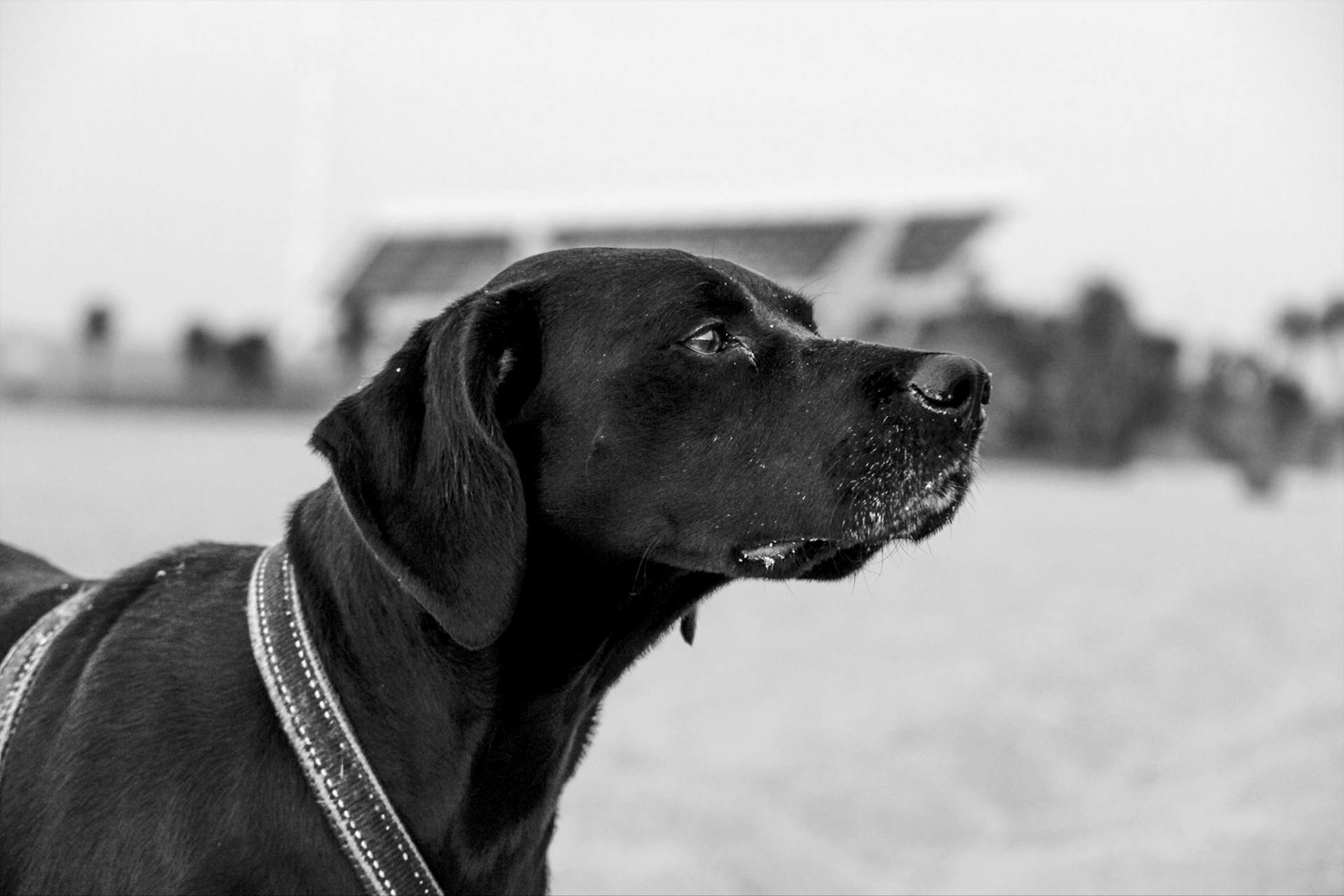
By the time your Labrador is 2 or 3 years old, their physical and emotional journey to adulthood is complete. They've reached a point where if you treat them consistently, their behavior will remain consistent too.
Their friendly and easy-going nature makes them exceptional companions. They're great buddies for running, hiking, or cycling with, but without enough exercise, they might resort to unwanted behaviors like chewing furniture, barking, or digging in the garden.
Factors that will affect their behavior include the temperament of their parents, socialization they received as a puppy, training, physical exercise, mental stimulation, diet, time spent alone, health factors, and positive and negative experiences.
Here are some key factors to consider:
- The temperament of their parents
- Socialization they received as a puppy
- Training
- How much physical exercise they get
- How much mental stimulation they receive
- Diet
- How much time they spend alone
- Health factors
- Positive and negative experiences
For example, if your Lab is experiencing joint pain from hip dysplasia, it can affect their behavior, especially if they're jumped on by a playful younger dog. This could make them reactive towards encounters with other dogs in future.
Core Reasons for Behavior Development
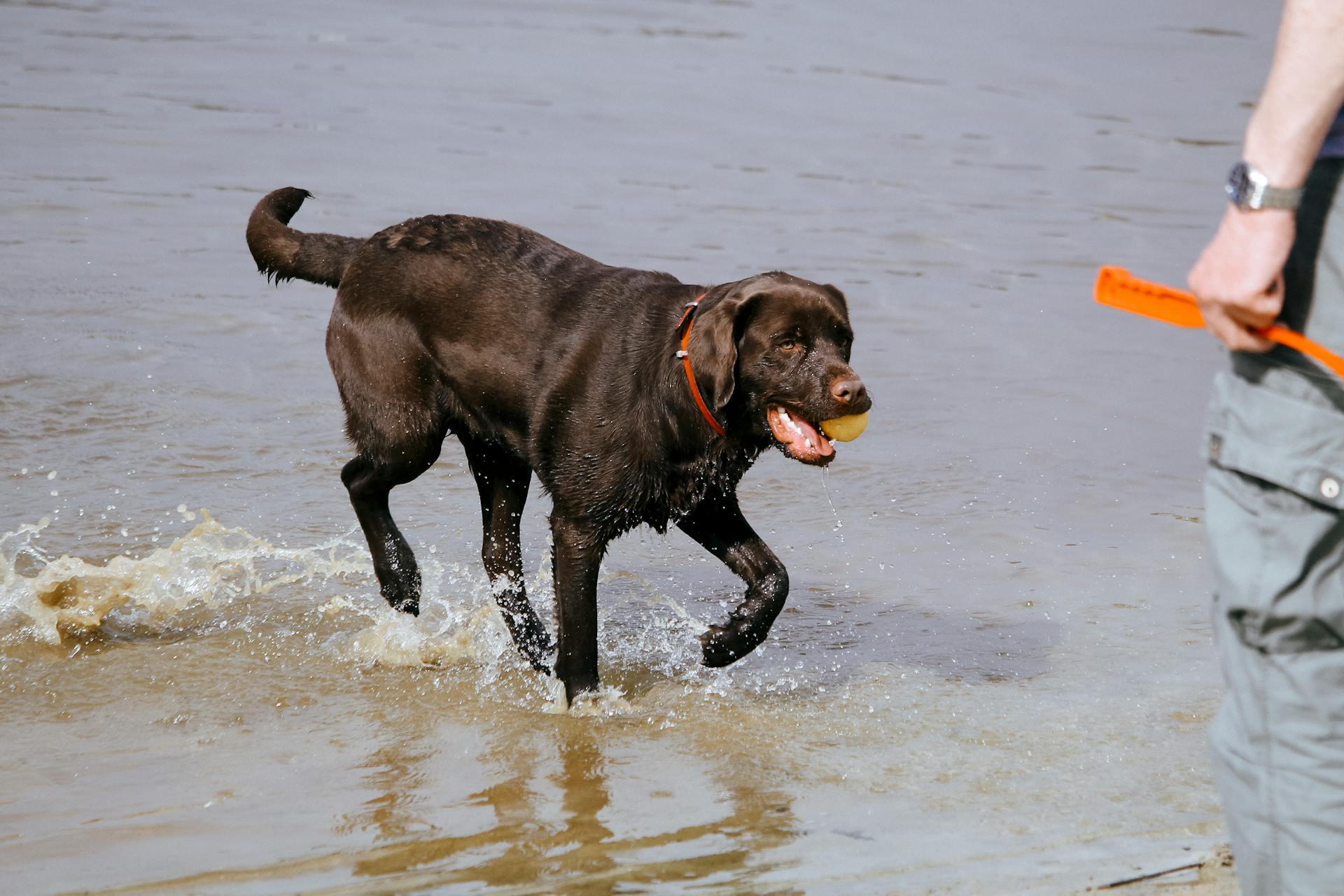
Labradors, like all dogs, are individuals with unique genetics, personalities, and life experiences that shape who they are and how they behave. Each dog's behavior is a result of these individual factors.
Poor health, pain, or illness can be a significant cause of behavior problems in dogs. I've seen dogs develop anxiety issues due to chronic pain, and it's heartbreaking to watch.
Fear or being scared of something or someone in their environment can also lead to behavior problems. This can be caused by a lack of socialization when they were a puppy or a sudden change in their environment.
Labradors are a sporting breed, made for life outside, and their strong drives and urges are often left unsatisfied when they're living as pets. This can lead to boredom and the development of behavioral problems.
Some common causes of behavior problems in Labradors include lack of exercise, lack of mental stimulation, and genetic, hereditary issues. A lack of exercise can lead to pent-up energy, while a lack of mental stimulation can lead to boredom and destructive behavior.
Here are some possible causes of behavior problems in Labradors:
- Poor health, pain or illness
- Fear or being scared of something or someone in their environment
- Inadequate socialization when they were a puppy
- Feeling socially isolated
- Lack of exercise
- Lack of mental stimulation
- Genetic, hereditary issues
- Sudden changes in diet
- Sudden changes in daily routine
- Being inconsistent with the rules you place on them
- Lack of comfort (quiet time, a nice place to rest)
- Inconsistent or lack of sleep
In today's world, many Labradors are living largely as pets, without the physical and mental stimulation they need to thrive. This can lead to boredom, which is a major cause of bad behavior in Labradors.
Normal and Abnormal Behavior
Labrador behavior can be a bit of a mystery, but understanding what's normal and what's not is key to being a responsible owner. Many unwanted behaviors are just normal behaviors for a Lab, like barking when people approach or eating poop, but these can be misinterpreted as problems.
Labradors are a social breed and need interaction with their owners and other dogs, so it's not normal for them to be withdrawn and inactive. This is actually a behavior problem that can signal issues in the dog's life.
Some common causes of abnormal behavior in Labs include poor health, fear, inadequate socialization, and lack of exercise or mental stimulation. These issues can lead to destructive behavior, aggression, and other problems that need to be addressed.
Here are some examples of abnormal behavior in Labs:
- Self-harming
- Destructive behavior
- Aggression towards people or other animals
- Going to the bathroom anywhere in the home
- Compulsive or obsessive behaviors
- Withdrawal and inactivity
These behaviors are not normal for a dog and require attention from a veterinarian or a certified animal behaviorist to address the underlying issues.
Some Are Abnormal and True
Some behavior problems in dogs are not normal and are a cause for concern. This is especially true for breeds like Labradors that are typically very active and social.
Behaviors like self-harming, being extremely destructive, or aggressive towards everyone around them are clear signs of a problem that needs to be addressed.
Dogs that exhibit compulsive and obsessive behaviors or go to the toilet anywhere in the house are also showing abnormal behavior.
Some dogs may become very quiet and withdrawn, suppressing their natural behaviors and hiding away from people all the time, which is a common sign of depression in dogs.
Labradors that are normally very active and social will often show signs of depression if they become withdrawn and inactive.
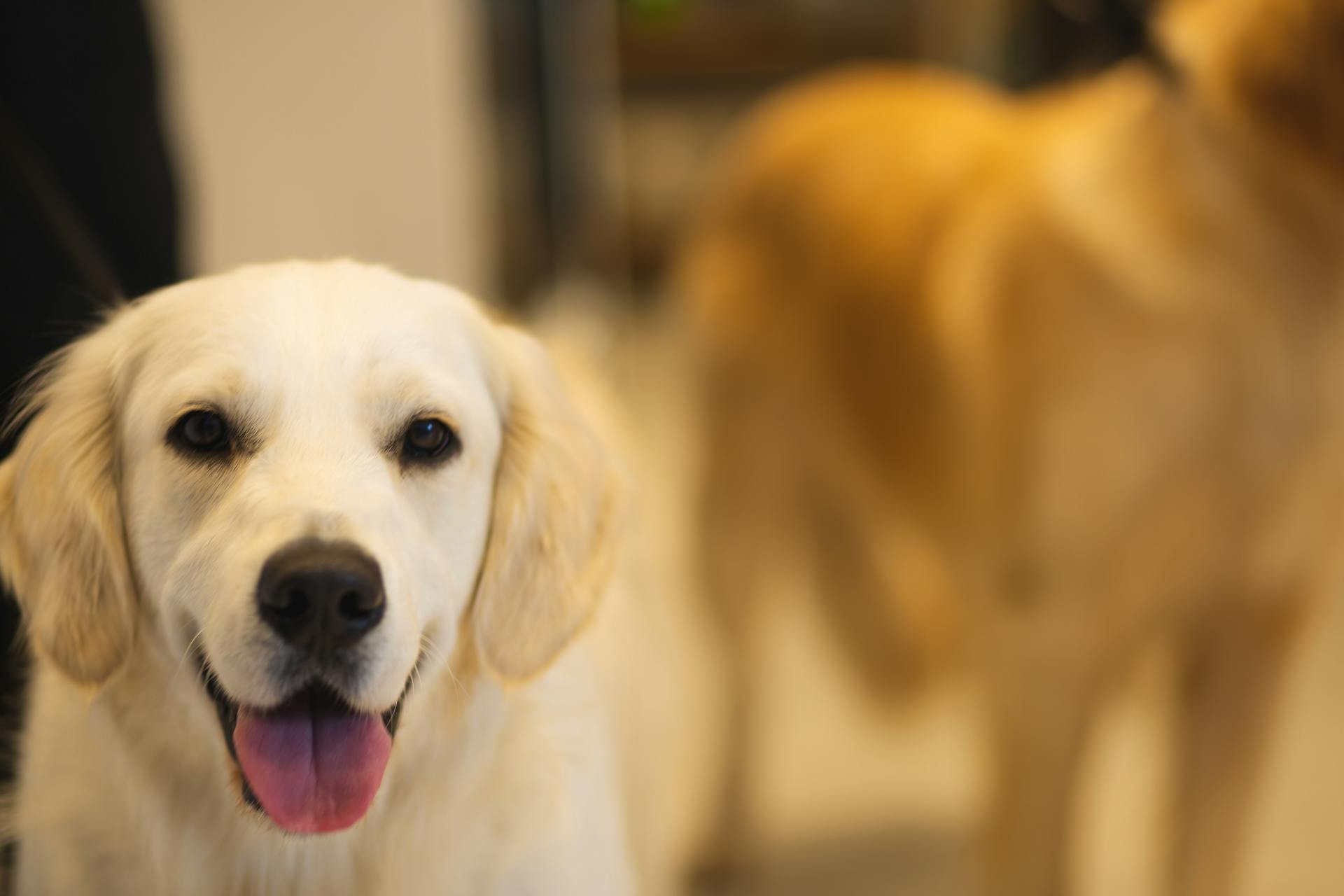
Being withdrawn and inactive is a behavior problem that may not be immediately recognizable, but it's just as important to address as other behavior problems.
Dogs that develop deep-seated fears due to lack of socialization or abuse may need to be desensitized to their fears, but in some cases, a management approach may be more practical.
The Senior Years
As your Labrador reaches senior age, around 9 years old, you may start to notice some changes in their behavior. Senior dogs are more likely to be diagnosed with diabetes, which can affect their toilet habits, such as needing to get up in the night to pee again.
Regular veterinary checks are crucial to help manage these changes. Your vet can provide practical advice on making your dog's golden years as comfortable as possible.
Senior dogs may become less responsive to your cues due to sensory changes like sight and hearing loss. This can be frustrating, but it's not a sign of disobedience.
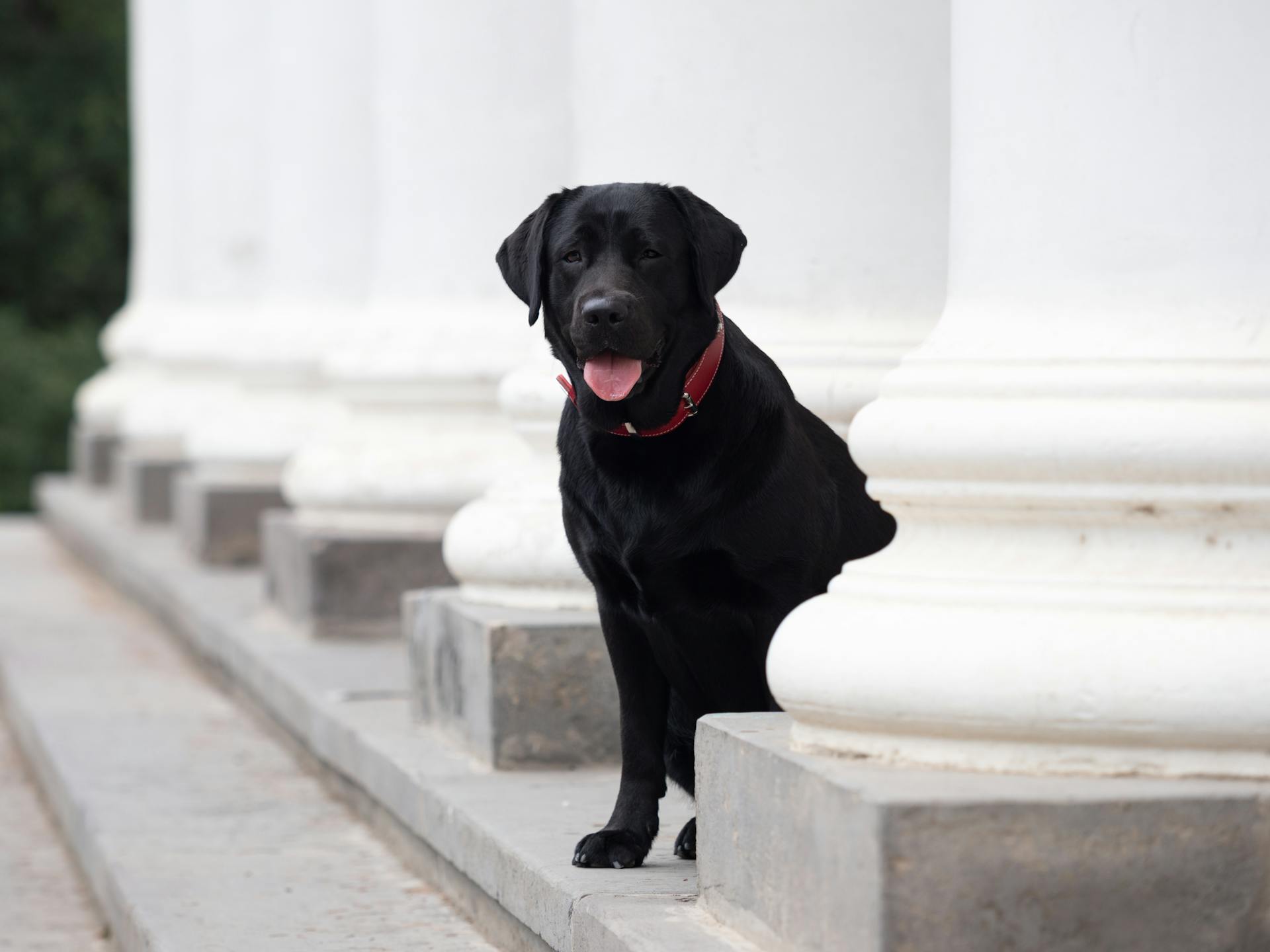
Physical changes like loss of muscle mass and joint degeneration can slow your dog down and reduce their interest in activities they once loved, like walks or playing fetch. It's essential to adapt their exercise routine to their new needs.
As dogs age, they're more likely to show signs of canine cognitive dysfunction (CCD), similar to dementia in humans. CCD can cause behavior changes such as night waking, forgetfulness, and becoming disorientated.
Here are some common signs of CCD in senior dogs:
- Increased night waking
- Forgetfulness
- Becoming disorientated
By being aware of these potential changes and seeking veterinary advice, you can help your senior dog live a happy and comfortable life.
Normal Behaviors
Many Labrador owners are surprised by their dog's natural behaviors, which are often mislabeled as problems.
Barking at people who approach is a perfectly normal behavior for a Labrador, as it's a natural instinct to alert and protect its territory.
Eating poop is another common issue, but it's actually a normal behavior for a dog to engage in, especially if they're not getting enough fiber in their diet.

Digging in soil is a natural behavior for a Labrador, as it's a leftover from their hunting days when they would dig to uncover prey.
Growling when feeling threatened is a normal response for a dog, and it's not something to be ashamed of.
Chasing small animals is a natural instinct for a Labrador, as they were bred to retrieve and hunt.
Peeing to mark their territory is a normal behavior for a dog, and it's not something that can be completely eliminated.
Providing alternative behaviors and outlets for your dog's natural urges and drives is key to preventing problems.
Aggression and Socialization
Aggression in Labrador Retrievers can be a major concern for owners. Snarling, showing their teeth, and growling are all common signs of aggression in dogs, including Labradors.
If you notice your Labrador exhibiting any of these behaviors, it's essential to know how to calm an aggressive dog. A stiff body posture, ears pinned back, and barking can also be indicators of aggression.
To prevent aggression in your Labrador, socialization is key. Take your dog on regular walks where they can meet new people and dogs, and gradually introduce them to strangers and other pets.
Here are some common signs of aggression in Labradors:
- Snarling
- Showing their teeth
- Ears pinned back
- Stiff body posture
- Growling
- Barking
- Lunging
- Biting with various intensity
Aggression Signs
Snarling is a clear sign of aggression in dogs, and it's essential to recognize it early on. If you notice your dog snarling, it's best to give them space and avoid interacting with them.
Showing their teeth is another common sign of aggression in dogs. This behavior can escalate quickly, so it's crucial to address the situation promptly.
Ears pinned back is a subtle yet significant sign of aggression in dogs. It's a physical cue that your dog is feeling anxious or threatened.
A stiff body posture is a clear indication of aggression in dogs. If your dog's body is tense and rigid, it's best to approach them calmly and carefully.
Growling is a loud and clear warning sign of aggression in dogs. It's essential to listen to your dog's growl and give them space.
Barking can be a sign of excitement or anxiety, but in some cases, it can also be a sign of aggression. If your dog's barking is accompanied by other aggressive behaviors, it's best to intervene.
Lunging is a physical sign of aggression in dogs, and it can be a sign of a more severe attack. If your dog is lunging at you or others, it's essential to seek professional help.
Biting is the most severe sign of aggression in dogs. It can range from light nips to more severe puncturing bites, and it's essential to address the situation immediately.
Common Signs of Aggression in Dogs:
- Snarling
- Showing their teeth
- Ears pinned back
- Stiff body posture
- Growling
- Barking
- Lunging
- Biting with various intensity
Why Animals Become Aggressive
Understanding why animals become aggressive is a crucial step in addressing the issue. Illness or pain can be a significant trigger for aggression in animals.
Some common reasons for aggression include past trauma or stressors, which can have a lasting impact on an animal's behavior. Protecting possessions or territory is another common reason, as animals may become defensive when they feel their space or belongings are being threatened.
Establishing dominance can also be a factor, especially in social situations where animals may feel the need to assert their position. Fear and anxiety can also contribute to aggression, as animals may become defensive or lashing out when they feel threatened.
Here are some common reasons for aggression in animals:
- Illness or pain
- Past trauma or stressors
- Protecting possessions or territory
- Establishing dominance
- Fear
- Anxiety
- Frustration
- Leash aggression
- Social aggression
- Feeling protective
Tip 1: Reward Appropriately
Rewarding good behavior is a crucial step in training your Labrador to be kinder and less aggressive. Giving them treats when they're calm and kind helps them associate good behavior with tasty rewards.
Labradors have a strong connection between good behavior and treats. By giving them treats in these situations, you're reinforcing positive behavior.
Treats should be given sparingly, not all day long. This will help your Labrador understand what behavior is being rewarded.
Tip 6: Socialize
Socializing your Labrador is crucial to prevent violent reactions when encountering unfamiliar people and dogs.
Gradually exposing your dog to new people and dogs on regular walks is a great way to help them understand how to behave in public. You can also practice commands like "sit" or "stay" to reinforce good behavior.
Introducing your dog to people and dogs should be done slowly and one at a time to avoid overwhelming them. Don't force your dog to interact with strangers, let them take the lead and find the courage to approach on their own.
Frequently Asked Questions
At what age do Labradors calm down?
Labradors typically calm down between 2-4 years of age, with some starting earlier or later in life. Mental maturation during this period can bring a more relaxed and composed furry friend.
What is the attitude of a Labrador dog?
Labradors are extremely affectionate and loving towards people and other animals, making them great family pets. With proper exercise and attention, they thrive as happy and energetic companions.
Which color lab is the calmest?
Lab color has no bearing on temperament, as all Labs are known to be sweet-natured and calm regardless of coat color. However, proper exercise and training can greatly impact a Lab's behavior.
Sources
- https://www.thelabradorsite.com/labrador-behaviour/
- https://www.thelabradorsite.com/labrador-behavior-by-age/
- https://www.labradortraininghq.com/labrador-behavior/labrador-behavior-problems/
- https://www.labradortraininghq.com/category/labrador-behavior/
- https://medium.com/@lovelabworld1/top-7-tips-to-deal-with-an-aggressive-labrador-retriever-ca8da4943827
Featured Images: pexels.com
